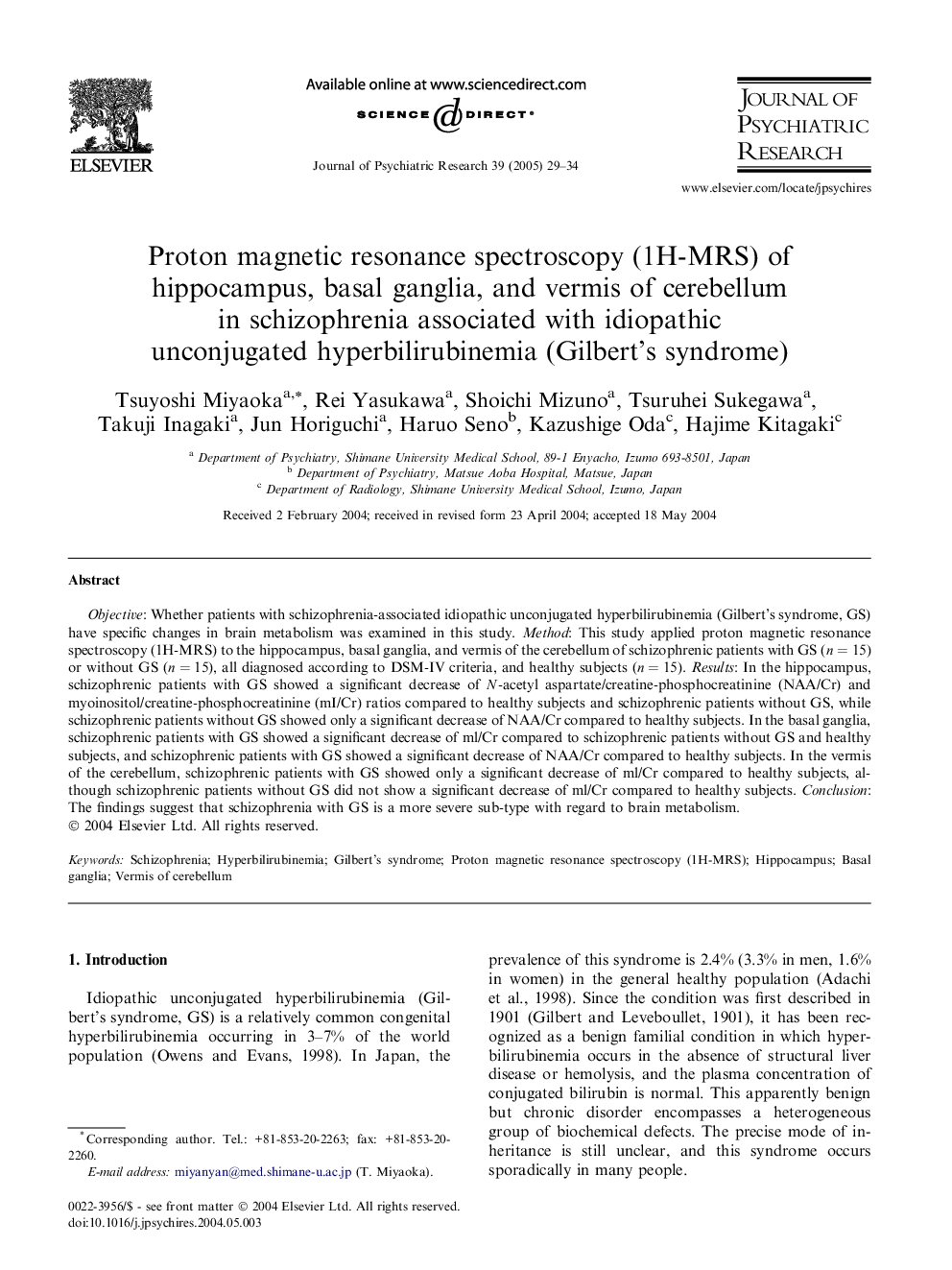| Article ID | Journal | Published Year | Pages | File Type |
|---|---|---|---|---|
| 10302702 | Journal of Psychiatric Research | 2005 | 6 Pages |
Abstract
Objective: Whether patients with schizophrenia-associated idiopathic unconjugated hyperbilirubinemia (Gilbert's syndrome, GS) have specific changes in brain metabolism was examined in this study. Method: This study applied proton magnetic resonance spectroscopy (1H-MRS) to the hippocampus, basal ganglia, and vermis of the cerebellum of schizophrenic patients with GS (n=15) or without GS (n=15), all diagnosed according to DSM-IV criteria, and healthy subjects (n=15). Results: In the hippocampus, schizophrenic patients with GS showed a significant decrease of N-acetyl aspartate/creatine-phosphocreatinine (NAA/Cr) and myoinositol/creatine-phosphocreatinine (mI/Cr) ratios compared to healthy subjects and schizophrenic patients without GS, while schizophrenic patients without GS showed only a significant decrease of NAA/Cr compared to healthy subjects. In the basal ganglia, schizophrenic patients with GS showed a significant decrease of ml/Cr compared to schizophrenic patients without GS and healthy subjects, and schizophrenic patients with GS showed a significant decrease of NAA/Cr compared to healthy subjects. In the vermis of the cerebellum, schizophrenic patients with GS showed only a significant decrease of ml/Cr compared to healthy subjects, although schizophrenic patients without GS did not show a significant decrease of ml/Cr compared to healthy subjects. Conclusion: The findings suggest that schizophrenia with GS is a more severe sub-type with regard to brain metabolism.
Keywords
Related Topics
Life Sciences
Neuroscience
Biological Psychiatry
Authors
Tsuyoshi Miyaoka, Rei Yasukawa, Shoichi Mizuno, Tsuruhei Sukegawa, Takuji Inagaki, Jun Horiguchi, Haruo Seno, Kazushige Oda, Hajime Kitagaki,
